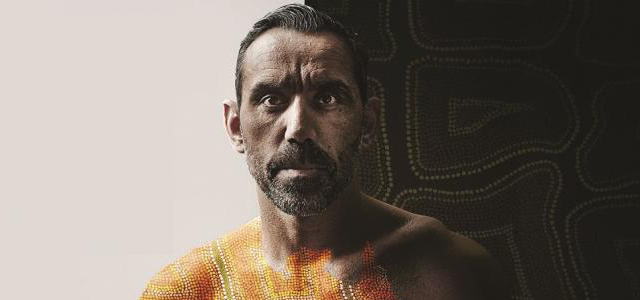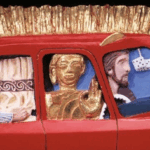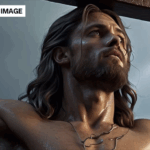Adam Goodes was awarded the Australian of the Year in 2014 for his anti-racism advocacy and youth work. He has been awarded the Brownlow medal, the Australian Football League’s ‘best and fairest’ award, twice. He has won two premierships while playing for the Sydney Swans. He is known as a role model in the indigenous community. Yet, he retired quietly after two odd years of enduring vicious and ongoing personal and racist attacks after calling out a derogatory comment made to him while playing the Indigenous Round in 2013.
Adam Goodes admits that he didn’t really know much about his Aboriginality while growing up. His mother was one of the Stolen Generation and to protect her three boys they moved around a lot. Sport was the way that Goodes connected with his peers and eventually he participated in AFL. Here he found a culture that he could embrace and, initially, felt very proud being a part of. It was while he was doing further study, at the request of the Swans Football Club, that he was able to explore his indigenous heritage in much more depth.
This study opened his eyes to the history of unjust treatment of indigenous people since white settlement. The massacres, rape, murder, stolen land, stolen children, were confronting and Goodes determined that he would stand against racism. When he called out a racist comment, the first he’d endured in eight years, the backlash was overwhelming.
In Following Jesus in Invaded Space: Doing Theology on Aboriginal Land, Chris Budden writes that racism in Australia is about keeping indigenous people “in their place” and maintaining white privilege (p 50-60). Adam Goodes was “acceptable” as a footballer. White Australia could tolerate that position – it was the “right place” for him. But once he had shone light on a clearly racist comment, he was now no longer “in his place.” Once he was out of this box, calling out racism, the public had to “put him back in.” As Stan Grant said in the documentary, Adam Goodes had become “the black man who complained.” That was not acceptable and years of booing and online attacks followed. Racism was alive and well in Australia.
The comments and the booing were racist. We can’t get around that. Denying it means we are guilty of racism. Budden explains that racism is also about places or centres of power. Centres of power, whether political, commercial or religious, seek to “define Indigenous people and their religious life in ways that allow for their lives to be ignored or controlled” (p58). This is usually for Indigenous people’s detriment and for the political and commercial gain of those in power. Racism has the primary shape of “invisibility and…of making visible for the purposes of shame” (p60). The invisibility is seen in stealing children, imprisoning them, taking land and denying voting rights. Often Indigenous people only become visible when it suits a political purpose and to shame them. This can be seen in the intervention in the Northern Territory where politicians focused on widespread abuse, alcoholism and poverty to push through policies of financial control and greater judicial power (Chapter 5). Adam Goodes experienced this when he was called derogatory names, jeered and bullied when he stood against racism. These were attempts to shame him into silence.
Goodes also revealed aspects of the nature of generational trauma for Indigenous people. His mother was one of the Stolen Generation, taken from her parents when she was very young. He and his two brothers have been shaped by her experience. The documentary highlighted that this was one consequence of the “problem of the Aborigine” as understood by colonial Australia. Budden writes that Australian policies of segregation, assimilation, integration and self-determination were underpinned by racism and paternalism, in an effort to make Indigenous people “disappear” by being completely absorbed into mainstream Australia (p28-29). The overall effect of 146 years of child removal was damaging to Indigenous people resulting in the loss of identity, family, relationships and culture.
At the end of the documentary, Adam Goodes made a request for a hand up, not handouts. The latter did not serve indigenous people well. What was needed was a fair go so that all Australians could walk together in equality. Chris Budden calls this “redistributive justice” (p 126-127). It is a Biblical concept of justice that is, “about shifting resources of power and wealth from the rich and powerful to the poor and oppressed in order to create a fair and equal society.” It also includes, “the dynamics of reconciliation, forgiveness, and reparation.”
In order for this to happen, there has to be an acknowledgement of Australia’s colonial history and its destructive effects on indigenous peoples, their culture and the land. Budden reminds us that this history cannot be denied, it cannot be forgotten and it needs to be taken responsibility for (p 60-63). Denial and avoidance of the massacres, rape, murders, and stolen land prevent Australia from progressing in a positive, fair and just direction. Without truth we can’t move forward.
The advertising for the documentary states the following: “The Australian Dream is something people reach for and many people obtain, but there’s an emptiness at the heart of it because Australia has not resolved the questions of its history. If the Australian Dream is rooted in racism, what can be done to redefine it for the next generation?” This is a fair observation. Budden’s book goes some way to help the church in Australia recognise and challenge racism, discrimination and paternalism.
The documentary left me with a lot of questions, sorrows and a level of anger that racism was still so prevalent. As I prepared to walk out of the cinema, I overheard two women commenting on the documentary. The last things I heard them say were ‘Stan Grant for Prime Minister’ and ‘and Adam Goodes for Deputy’. This may not be such a bad idea.
The Australian Dream is currently showing in cinemas.
Dr Katherine Grocott













